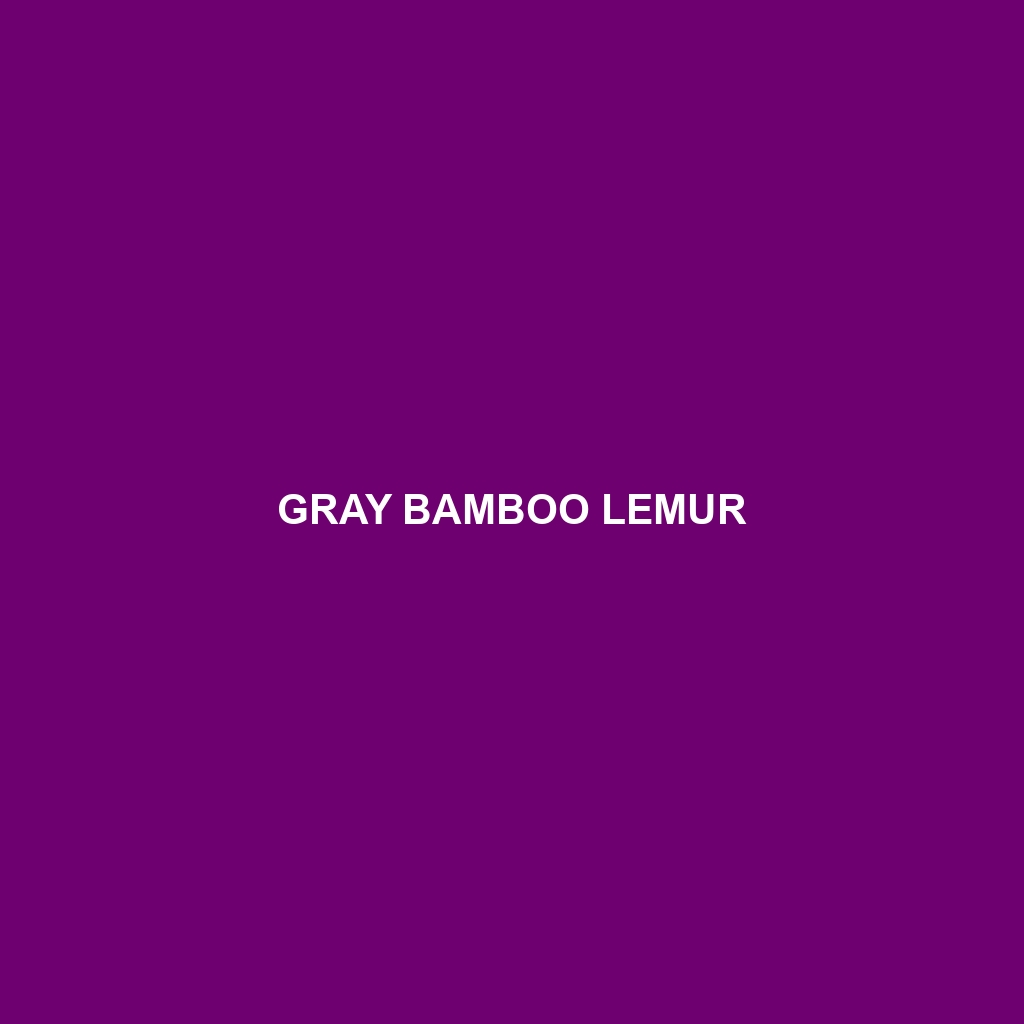Gray Bamboo Lemur: A Comprehensive Species Description
Common Name: Gray Bamboo Lemur
Scientific Name: Hapalemur griseus
Habitat: The Gray Bamboo Lemur is primarily found in the **tropical rainforests of Madagascar**, particularly in regions rich in bamboo. These lemurs inhabit the forest understory and thrive in areas with dense vegetation, which provides both food and shelter. Their range includes the eastern rainforests, such as the Andasibe-Mantadia National Park and Masoala National Park, where warm, humid conditions dominate.
Physical Characteristics: The Gray Bamboo Lemur typically measures between **60 to 70 centimeters** long, with a tail that can be even longer than its body. This species is characterized by its **soft, gray fur**, contrasted with a lighter underbelly. It has **large, expressive eyes** that are adapted for low-light conditions, aiding in its nocturnal lifestyle. Distinctively, the lemur’s hands and feet are well adapted for climbing and grasping bamboo culms, showcasing long fingers and toes.
Behavior: Gray Bamboo Lemurs are primarily **nocturnal**, meaning they are most active during the night. They are known for their social structure, living in **small family groups**. Their behavior includes foraging for food and calling to each other with a range of vocalizations. These lemurs are also **arboreal**, spending most of their time in trees, which they adeptly navigate. Their playful nature is often displayed by engaging in social grooming and playful interactions with one another.
Diet: As herbivores, Gray Bamboo Lemurs primarily feed on **bamboo shoots and leaves**, which constitute a significant portion of their diet. Additionally, they consume a variety of fruits, flowers, and occasionally insects, showcasing a degree of dietary flexibility. Their adaptation to a bamboo-rich diet is a remarkable feature that highlights their niche within the ecosystem.
Reproduction: The breeding season for Gray Bamboo Lemurs generally occurs between **September and November**. After a gestation period of approximately **130 days**, females give birth to a single offspring, although twins can occasionally occur. The young are dependent on their mothers for up to six months, during which they learn vital survival skills. Unique nurturing behaviors within family groups contribute to the survival of the offspring.
Conservation Status: The Gray Bamboo Lemur is currently classified as **Endangered** by the International Union for Conservation of Nature (IUCN). Habitat destruction due to deforestation and slash-and-burn agriculture poses significant threats to their survival. Conservation efforts are critical to protect this unique species and its habitat.
Interesting Facts: An intriguing fact about the Gray Bamboo Lemur is its unique adaptation to a diet predominantly consisting of bamboo, which is rare among lemurs. These lemurs also play a significant role in their habitat by aiding in **bamboo regeneration** through their feeding habits. Additionally, they showcase remarkable communication skills and social structures that are still being studied by primatologists.
Role in Ecosystem: The Gray Bamboo Lemur plays a crucial role in its ecosystem as a **seed disperser** and as an herbivore that helps maintain the balance of vegetation in its habitat. By feeding on bamboo and other plant materials, they contribute to the health of their forest environment, promoting growth and regeneration. Their interactions with other species also underscore the importance of biodiversity in Madagascar’s ecosystems.
